Gourav Prateek Sharma
Quality of Control based Resource Dimensioning for Collaborative Edge Robotics
Nov 11, 2024
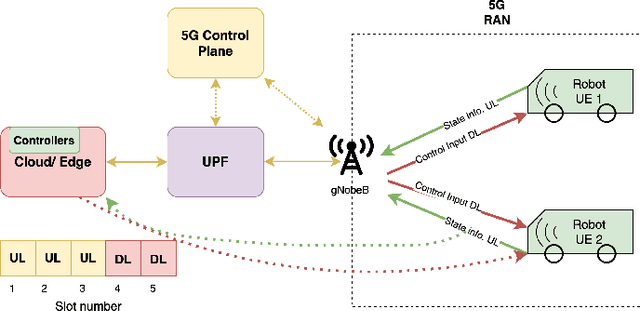
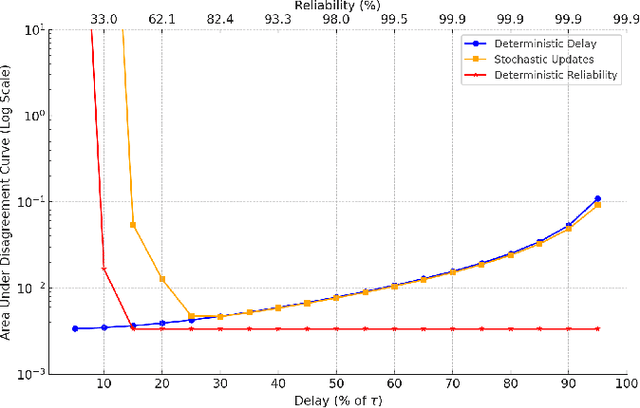
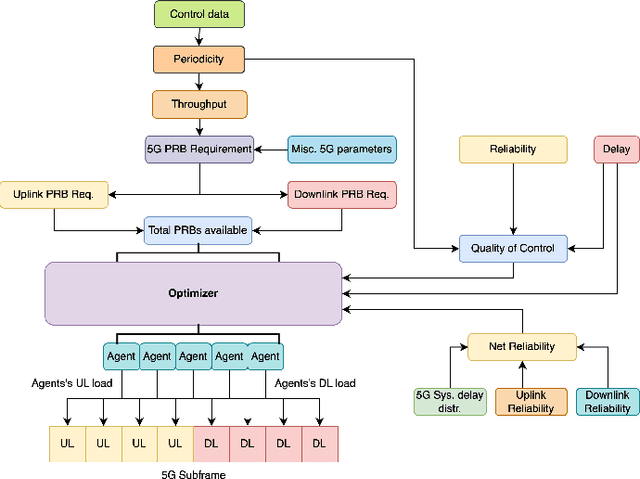
Abstract:With the increasing focus on flexible automation, which emphasizes systems capable of adapting to varied tasks and conditions, exploring future deployments of cloud and edge-based network infrastructures in robotic systems becomes crucial. This work, examines how wireless solutions could support the shift from rigid, wired setups toward more adaptive, flexible automation in industrial environments. We provide a quality of control (QoC) based abstraction for robotic workloads, parameterized on loop latency and reliability, and jointly optimize system performance. The setup involves collaborative robots working on distributed tasks, underscoring how wireless communication can enable more dynamic coordination in flexible automation systems. We use our abstraction to optimally maximize the QoC ensuring efficient operation even under varying network conditions. Additionally, our solution allocates the communication resources in time slots, optimizing the balance between communication and control costs. Our simulation results highlight that minimizing the delay in the system may not always ensure the best QoC but can lead to substantial gains in QoC if delays are sometimes relaxed, allowing more packets to be delivered reliably.
ExPECA: An Experimental Platform for Trustworthy Edge Computing Applications
Nov 02, 2023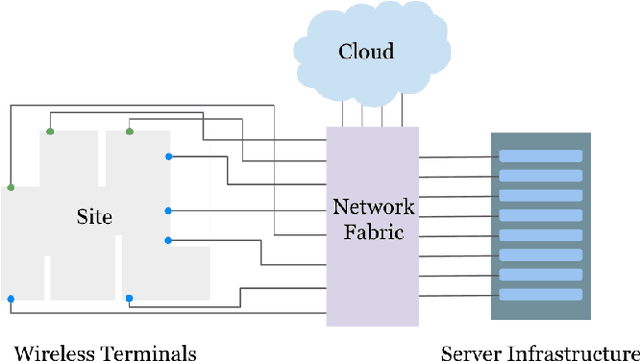

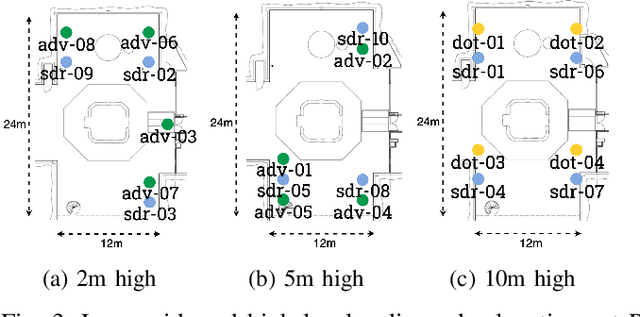

Abstract:This paper presents ExPECA, an edge computing and wireless communication research testbed designed to tackle two pressing challenges: comprehensive end-to-end experimentation and high levels of experimental reproducibility. Leveraging OpenStack-based Chameleon Infrastructure (CHI) framework for its proven flexibility and ease of operation, ExPECA is located in a unique, isolated underground facility, providing a highly controlled setting for wireless experiments. The testbed is engineered to facilitate integrated studies of both communication and computation, offering a diverse array of Software-Defined Radios (SDR) and Commercial Off-The-Shelf (COTS) wireless and wired links, as well as containerized computational environments. We exemplify the experimental possibilities of the testbed using OpenRTiST, a latency-sensitive, bandwidth-intensive application, and analyze its performance. Lastly, we highlight an array of research domains and experimental setups that stand to gain from ExPECA's features, including closed-loop applications and time-sensitive networking.
Data-Driven Latency Probability Prediction for Wireless Networks: Focusing on Tail Probabilities
Jul 20, 2023Abstract:With the emergence of new application areas, such as cyber-physical systems and human-in-the-loop applications, there is a need to guarantee a certain level of end-to-end network latency with extremely high reliability, e.g., 99.999%. While mechanisms specified under IEEE 802.1as time-sensitive networking (TSN) can be used to achieve these requirements for switched Ethernet networks, implementing TSN mechanisms in wireless networks is challenging due to their stochastic nature. To conform the wireless link to a reliability level of 99.999%, the behavior of extremely rare outliers in the latency probability distribution, or the tail of the distribution, must be analyzed and controlled. This work proposes predicting the tail of the latency distribution using state-of-the-art data-driven approaches, such as mixture density networks (MDN) and extreme value mixture models, to estimate the likelihood of rare latencies conditioned on the network parameters, which can be used to make more informed decisions in wireless transmission. Actual latency measurements of IEEE 802.11g (WiFi), commercial private and a software-defined 5G network are used to benchmark the proposed approaches and evaluate their sensitivities concerning the tail probabilities.
 Add to Chrome
Add to Chrome Add to Firefox
Add to Firefox Add to Edge
Add to Edge